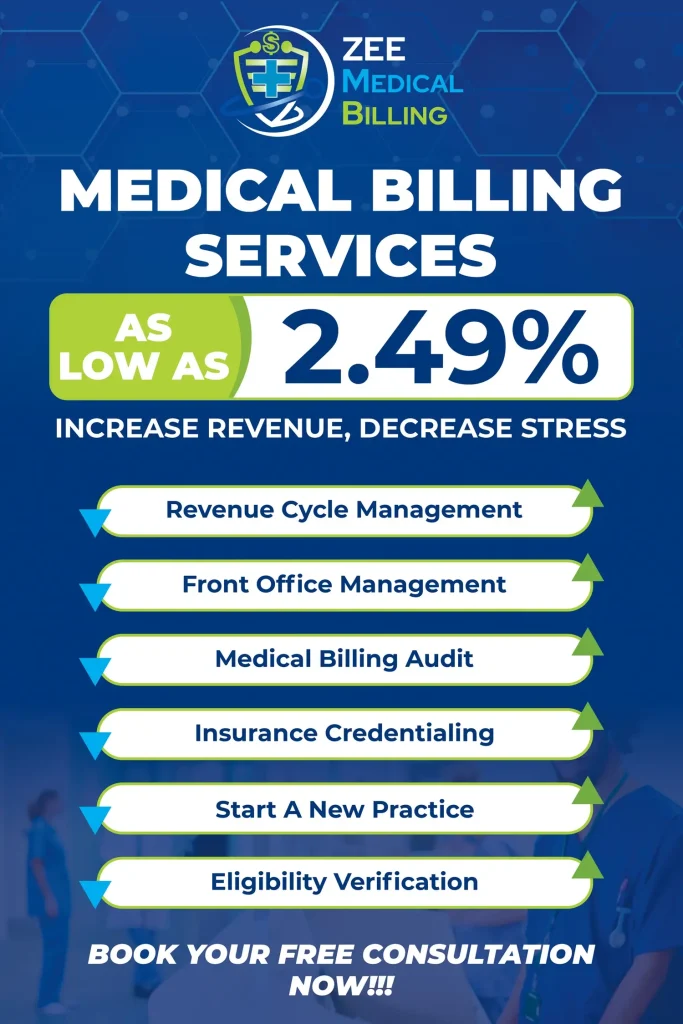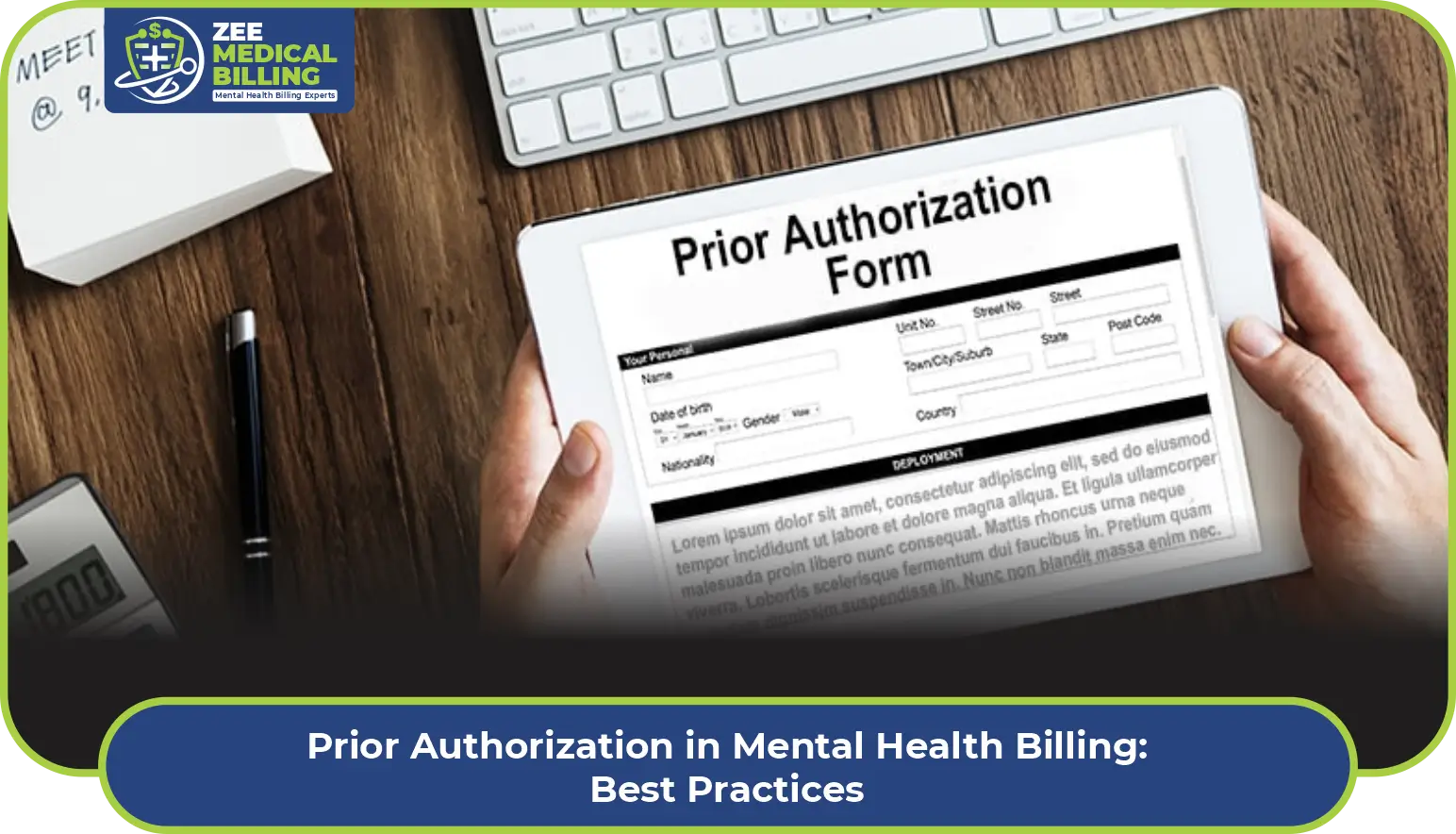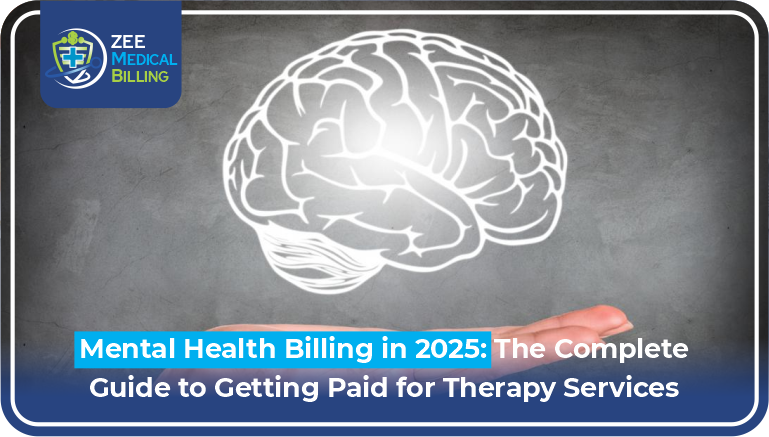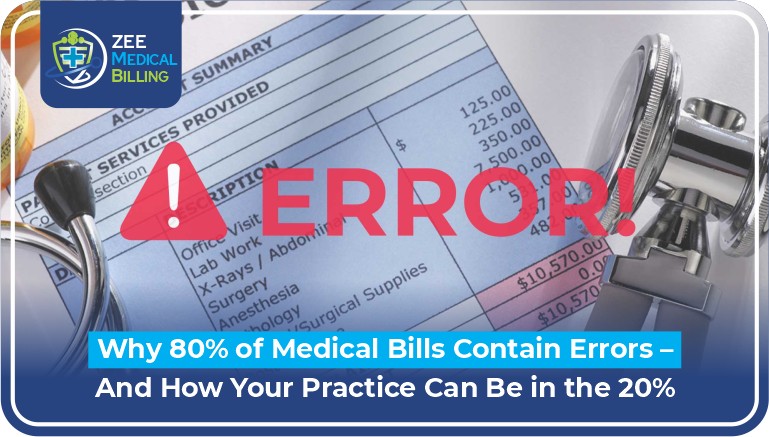Introduction to Hospitalist Medical Billing
Have you ever wondered how hospitals manage to keep track of all those complex medical procedures and ensure they get paid accurately? That’s where hospitalist medical billing services come into play. Hospitalists are physicians who specialize in the care of hospitalized patients, and their billing processes can be incredibly intricate. Unlike traditional outpatient billing, hospitalist billing involves multiple daily encounters, complex coding requirements, and frequent insurance interactions.
Why does billing accuracy matter so much? Well, even a small error can lead to claim denials, delayed payments, or worse—compliance issues that could result in hefty penalties. In an industry where margins are tight and regulations are strict, eliminating billing errors isn’t just good practice—it’s essential for financial health.
What Are Hospitalist Medical Billing Services?
Hospitalist medical billing services are specialized solutions designed to handle the unique billing needs of hospital-based physicians. These services manage everything from charge capture and coding to claim submission and payment posting. Think of them as the bridge between the clinical care provided and the financial reimbursement received.
Core Components of Hospitalist Billing
The core components include patient admission documentation, daily progress notes, discharge summaries, and proper coding using CPT and ICD-10 codes. Each patient encounter must be meticulously documented and coded to reflect the level of service provided. It’s like building a puzzle—every piece must fit perfectly for the complete picture to emerge.
Differences Between Hospitalist and Regular Medical Billing
Unlike outpatient billing, which typically involves one visit at a time, hospitalist billing requires tracking multiple encounters throughout a patient’s hospital stay. Hospitalists often see patients daily, perform consultations, and coordinate with other specialists. This creates a more complex billing scenario where timing, sequence of services, and proper modifier usage become critical factors.
Common Billing Errors in Hospitalist Services
Billing errors are like gremlins in the system—they can pop up anywhere and wreak havoc on your revenue cycle. Let’s explore the most common culprits.
Coding Mistakes and Their Impact
Coding errors are among the most frequent problems in hospitalist medical billing services. Using outdated codes, selecting the wrong level of service, or failing to apply appropriate modifiers can all lead to claim denials. Imagine coding a comprehensive consultation as a routine follow-up—that’s money left on the table.
Documentation Deficiencies
Poor documentation is the silent killer of accurate billing. When physicians don’t document thoroughly or clearly, coders can’t assign the correct codes. It’s like trying to bake a cake without a complete recipe—the results are bound to be disappointing. Missing signatures, incomplete histories, or vague descriptions of procedures can all trigger denials.
Charge Capture Problems
Charge capture errors occur when services provided aren’t properly recorded or billed. In the fast-paced hospital environment, it’s easy for procedures or consultations to slip through the cracks. This is particularly problematic when hospitalists perform bedside procedures or consultations that aren’t immediately documented.
Compliance and Regulatory Issues
Healthcare regulations are constantly evolving, and keeping up can feel like chasing a moving target. Billing practices that were acceptable yesterday might not comply with today’s regulations. From Medicare guidelines to payer-specific requirements, staying compliant requires constant vigilance and expertise.
The Financial Impact of Billing Errors
The cost of billing errors extends far beyond just lost revenue. Let’s break down the real financial impact.
Revenue Loss and Denied Claims
Denied claims are the most obvious consequence of billing errors. According to industry estimates, the average claim denial costs healthcare providers between $25 and $117 to rework. Multiply that by hundreds or thousands of claims, and you’re looking at substantial losses. Even worse, some denials are never resubmitted, representing permanent revenue loss.
Administrative Burden and Overhead Costs
Every billing error creates additional work. Staff must investigate the error, correct documentation, recode claims, and resubmit. This administrative burden diverts resources from other important tasks and increases operational costs. It’s like having a leaky bucket—no matter how much water you pour in, you’re constantly losing it through the holes.
How to Identify Billing Errors Early
Prevention is always better than cure, but early detection is the next best thing. Here’s how you can spot problems before they become catastrophic.
Regular Billing Audits
Conducting regular medical billing audits is one of the most effective ways to identify and correct errors. Audits examine your billing processes, documentation quality, and coding accuracy to pinpoint weaknesses. Think of audits as health checkups for your revenue cycle—they help you catch problems early when they’re easier to fix.
Monitoring Key Performance Indicators
Key performance indicators (KPIs) like first-pass claim acceptance rates, denial rates, and days in accounts receivable can signal brewing problems. When these metrics start trending in the wrong direction, it’s time to investigate. Tracking KPIs is like monitoring vital signs—they tell you when something’s not quite right.
Best Practices to Eliminate Billing Errors
Now let’s get to the good stuff—the strategies that actually work to reduce billing errors.
Implementing Robust Documentation Protocols
Clear, comprehensive documentation is the foundation of accurate billing. Establish standardized templates that prompt physicians to include all necessary information. Regular feedback loops between coders and physicians can also improve documentation quality over time.
Staff Training and Education
Your billing team needs ongoing education about coding updates, payer requirements, and compliance regulations. Consider it an investment rather than an expense. Well-trained staff make fewer errors, work more efficiently, and adapt more quickly to regulatory changes.
Leveraging Technology and Automation
Modern billing software can flag potential errors before claims are submitted, suggest appropriate codes based on documentation, and automate routine tasks. Technology isn’t perfect, but it’s excellent at catching the kind of repetitive mistakes humans are prone to making.
Conducting Medical Billing Audits
As mentioned earlier, regular audits are crucial. Both internal and external audits provide valuable insights into your billing accuracy. External audits, in particular, offer an objective perspective that can reveal blind spots in your processes.
The Role of Medical Billing Audits in Error Prevention
Let’s dive deeper into how audits can transform your billing operations.
What Is a Medical Billing Audit?
A medical billing audit is a systematic review of your billing processes, documentation, and coding practices to ensure accuracy and compliance. Professional auditors examine a sample of claims to identify patterns of errors, documentation deficiencies, and compliance risks.
Types of Billing Audits
There are several types of audits, each serving different purposes. Prospective audits review claims before submission to catch errors early. Retrospective audits examine already-submitted claims to identify patterns and learning opportunities. Compliance audits focus specifically on regulatory adherence.
Benefits of Regular Auditing
Regular audits provide multiple benefits beyond error detection. They create accountability, improve staff awareness, support compliance efforts, and often uncover opportunities for increased revenue. The insights gained from audits can drive process improvements that have lasting positive effects.
How ZEE Medical Billing Can Help
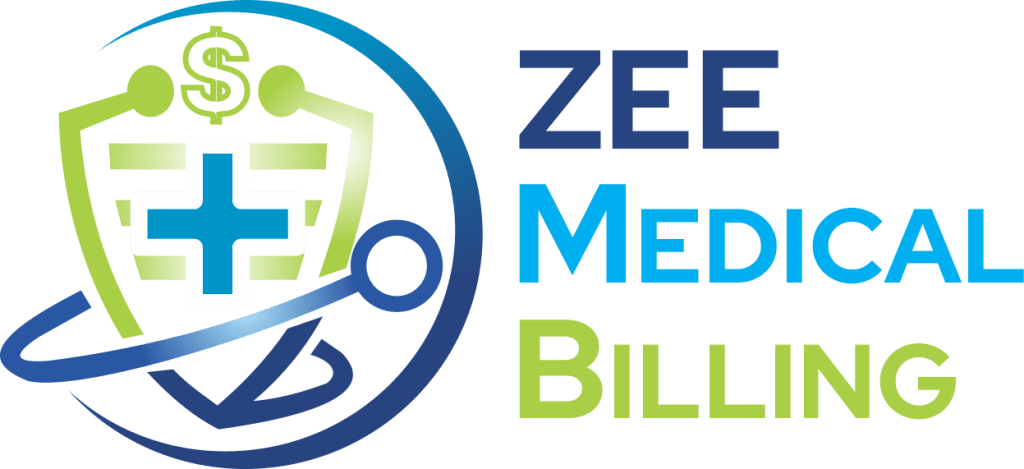
Finding the right partner for hospitalist medical billing services can make all the difference in your revenue cycle performance.
Comprehensive Billing Solutions
ZEE Medical Billing offers end-to-end billing solutions specifically designed for hospitalist practices. Their services cover everything from charge capture and coding to denial management and revenue cycle optimization. With specialized expertise in hospitalist billing, they understand the unique challenges you face.
Expert Audit Services
ZEE Medical Billing’s medical billing audit services provide thorough examinations of your billing processes to identify errors, compliance risks, and improvement opportunities. Their experienced auditors use proven methodologies to deliver actionable insights that can significantly reduce your error rates and improve revenue.
Choosing the Right Hospitalist Medical Billing Partner
Not all billing services are created equal. Here’s what to look for when selecting a partner.
Key Factors to Consider
Look for proven expertise in hospitalist billing specifically, not just general medical billing. Consider their technology platforms, reporting capabilities, and track record with denial management. References from similar practices can provide valuable insights into what working with them is really like.
Questions to Ask Potential Partners
Ask about their error rates, average days in accounts receivable, and first-pass acceptance rates. How do they handle denials? What’s their process for staying current with regulatory changes? How will they communicate with your team? These questions will help you separate true partners from mere vendors.
Technology Solutions for Error-Free Billing
Modern technology offers powerful tools to minimize billing errors.
Electronic Health Records (EHR) Integration
Seamless integration between EHR systems and billing software reduces manual data entry and the errors that come with it. When clinical documentation flows directly into billing systems, accuracy improves and efficiency increases.
Automated Coding Systems
Computer-assisted coding (CAC) systems analyze clinical documentation and suggest appropriate codes. While human oversight is still necessary, these systems can catch common errors and ensure consistency in code selection.
Conclusion
Eliminating costly billing errors in hospitalist medical billing services isn’t just possible—it’s essential for the financial health of your practice or hospital. By understanding common error types, implementing best practices, conducting regular audits, and potentially partnering with experienced billing specialists like ZEE Medical Billing, you can dramatically reduce errors and improve your bottom line. Remember, every prevented error is money saved and revenue protected. The investment in proper billing processes, staff training, and quality audits pays dividends far beyond the initial cost.
FAQs
1. What makes hospitalist billing more complex than regular outpatient billing?
Hospitalist billing involves multiple daily encounters, complex coordination with other specialists, frequent transitions of care, and more intricate coding requirements. Unlike outpatient visits that are typically one-time encounters, hospitalists must document and bill for daily visits throughout a patient’s hospital stay, making proper sequencing and modifier usage critical.
2. How often should I conduct medical billing audits for my hospitalist practice?
Most experts recommend conducting comprehensive audits at least annually, with more frequent spot audits (quarterly or monthly) for high-risk areas or after significant changes to billing processes. The frequency should increase if you’re experiencing high denial rates or if there have been recent regulatory changes affecting your specialty.
3. What are the most common CPT codes used in hospitalist billing?
The most common codes include the initial hospital care codes (99221-99223), subsequent hospital care codes (99231-99233), hospital discharge day management codes (99238-99239), and consultation codes when applicable. Critical care codes (99291-99292) are also frequently used by hospitalists.
4. Can outsourcing hospitalist medical billing services actually save money?
Yes, outsourcing can often save money by reducing denial rates, improving cash flow, eliminating the need for in-house billing staff, and providing access to specialized expertise. The key is finding a reputable partner with proven experience in hospitalist billing who can demonstrate measurable improvements in your revenue cycle metrics.
5. What documentation is most frequently missing in hospitalist claims that leads to denials?
The most commonly missing elements include inadequate medical necessity justification, incomplete histories of present illness, missing physician signatures, unclear time documentation for critical care services, and insufficient detail about the complexity of medical decision-making. Proper training and standardized templates can significantly reduce these documentation gaps.
Follow Us
- Instagram: @zee_medical_billing
- Facebook: ZeeMedicalBilling
- YouTube: Zee Medical Billing Channel
- Twitter/X: @BillingZee
- LinkedIn: Zee Medical Billing Company



















